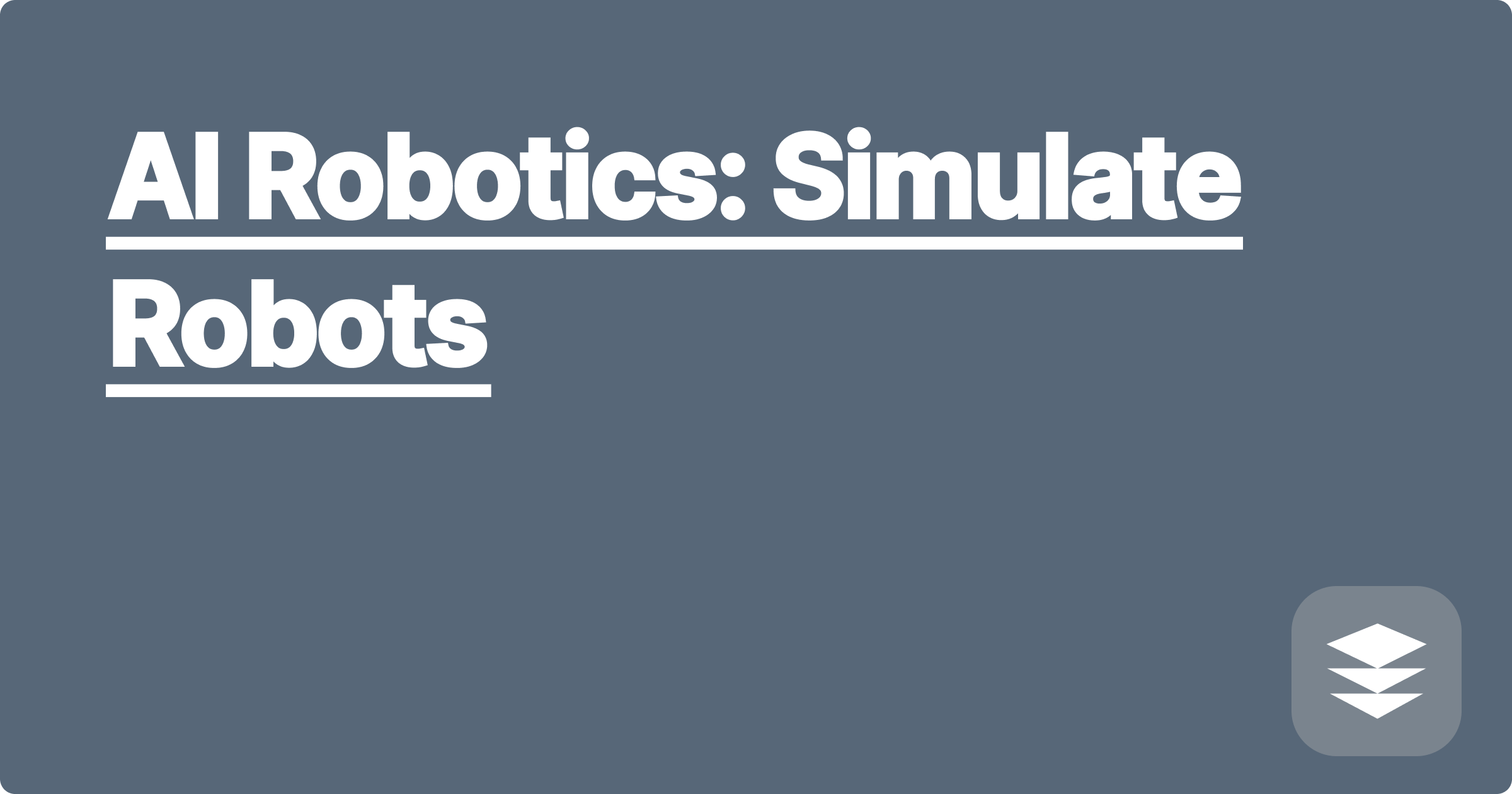
The intricate world of robotics presents a significant challenge for STEM students and researchers: the high cost and complexity of building and testing physical robots. Developing a new robotic system often involves numerous iterations of design, prototyping, and experimentation, which can be time-consuming and resource-intensive. Artificial intelligence offers a powerful solution by enabling the creation of sophisticated simulated environments where robots can be designed, tested, and refined virtually before transitioning to the physical world. This approach significantly reduces development costs and accelerates the pace of innovation.
For STEM students and researchers, mastering robotic simulation is becoming increasingly crucial. Simulation provides a safe and controlled environment for exploring complex algorithms, testing innovative designs, and pushing the boundaries of robotics without the risk of damaging expensive hardware. Furthermore, simulation fosters a deeper understanding of the underlying principles governing robotic systems, allowing researchers to analyze performance, identify potential issues, and optimize designs with greater precision. This knowledge translates directly into improved real-world robotic applications across various fields, from manufacturing and healthcare to exploration and disaster relief.
Developing and testing robots in the real world presents numerous hurdles. Physical robots require specialized components, sophisticated sensors, and robust actuators, all of which contribute to significant upfront costs. Beyond the initial investment, maintaining and repairing physical robots can be a continuous expense. Furthermore, real-world testing introduces safety concerns, particularly when dealing with complex or potentially hazardous environments. The iterative nature of robotic development often necessitates repeated modifications and adjustments, which can be time-consuming and costly when working with physical prototypes. Experimental errors can lead to damage or destruction of hardware, further increasing development costs and delaying progress. Finally, real-world environments are inherently unpredictable, making it challenging to isolate specific variables and conduct controlled experiments.
AI-powered simulation tools offer a compelling alternative to traditional physical prototyping. Platforms like PyBullet, Gazebo, and CoppeliaSim provide realistic physics engines and advanced rendering capabilities, allowing researchers to create virtual environments that closely mimic real-world conditions. These simulators can be integrated with AI algorithms and machine learning frameworks like TensorFlow and PyTorch, enabling the development of sophisticated robotic control systems. Furthermore, AI tools like ChatGPT, Claude, and Wolfram Alpha can be leveraged to assist with various aspects of the simulation process, from generating code for robot controllers to analyzing simulation data and providing insights for design optimization. For example, you can prompt ChatGPT to generate Python code snippets for specific robot behaviors or use Wolfram Alpha to calculate complex kinematic equations.
Begin by selecting an appropriate simulation environment based on the specific requirements of your project. Consider factors such as the complexity of the robot, the desired level of realism, and the availability of relevant libraries and tools. Next, define the virtual environment within the chosen simulator, including the terrain, obstacles, and any other relevant objects. Import or create a 3D model of your robot and configure its physical properties, such as mass, inertia, and joint limits. Develop the control algorithms for your robot using a programming language like Python or C++. Integrate the control algorithms with the simulation environment and begin testing the robot's behavior. Collect data from the simulation, such as robot position, velocity, and sensor readings. Analyze the collected data to evaluate the performance of the robot and identify areas for improvement. Iteratively refine the design and control algorithms based on the simulation results.
Consider a scenario where you are developing a robotic arm for a pick-and-place task. Within a simulator like PyBullet, you can define a virtual environment consisting of a conveyor belt, a bin of objects, and a target location. Using Python and a library like PyBullet's API, you can program the robotic arm to grasp objects from the conveyor belt and place them in the target location. The simulation allows you to test different control strategies, such as proportional-integral-derivative (PID) control or reinforcement learning, and evaluate their performance based on metrics like pick-and-place success rate and cycle time. For example, you might use the formula error = target_position - current_position to calculate the error signal for a PID controller. The simulation also allows you to experiment with different robot designs and gripper mechanisms without the need for physical prototypes.
Leveraging AI tools effectively in STEM education and research requires a strategic approach. Develop a strong foundation in fundamental robotics concepts, including kinematics, dynamics, and control theory. Familiarize yourself with various simulation environments and AI frameworks relevant to your research area. Practice formulating clear and concise prompts for AI tools like ChatGPT and Claude to obtain relevant and accurate information. Develop strong data analysis skills to interpret simulation results and draw meaningful conclusions. Collaborate with peers and mentors to share knowledge and gain insights from different perspectives. Document your simulation experiments meticulously, including the parameters used, the results obtained, and the conclusions drawn. Stay updated on the latest advancements in AI and robotics through conferences, journals, and online resources.
To effectively integrate AI robotics simulation into your academic pursuits, start by exploring available online tutorials and resources. Experiment with different simulation platforms and AI tools to identify those that best suit your needs. Join online communities and forums to connect with other researchers and practitioners in the field. Consider participating in robotics competitions and challenges to gain practical experience and test your skills. By actively engaging with the field and continuously seeking opportunities for learning and growth, you can harness the power of AI robotics simulation to advance your academic and professional goals.
AI Chemistry Solver: Ace Exams
AI Statistics Help: Data Analysis